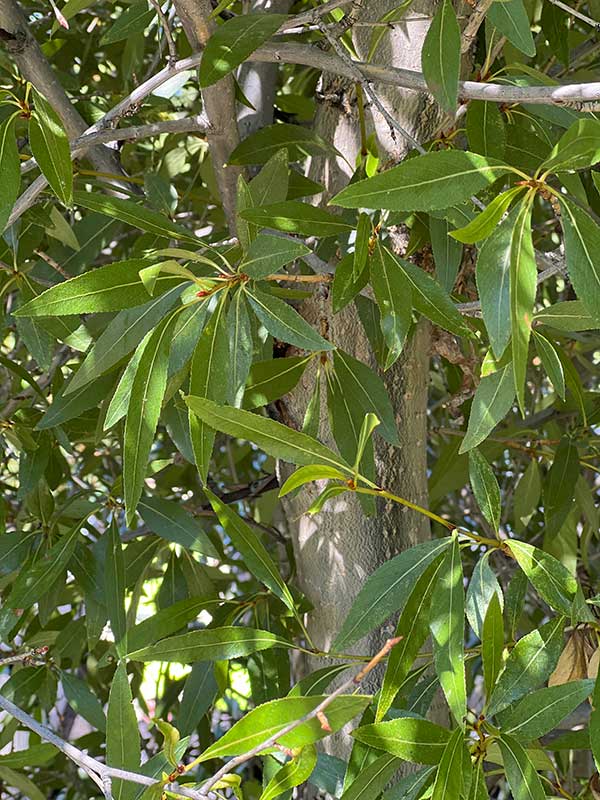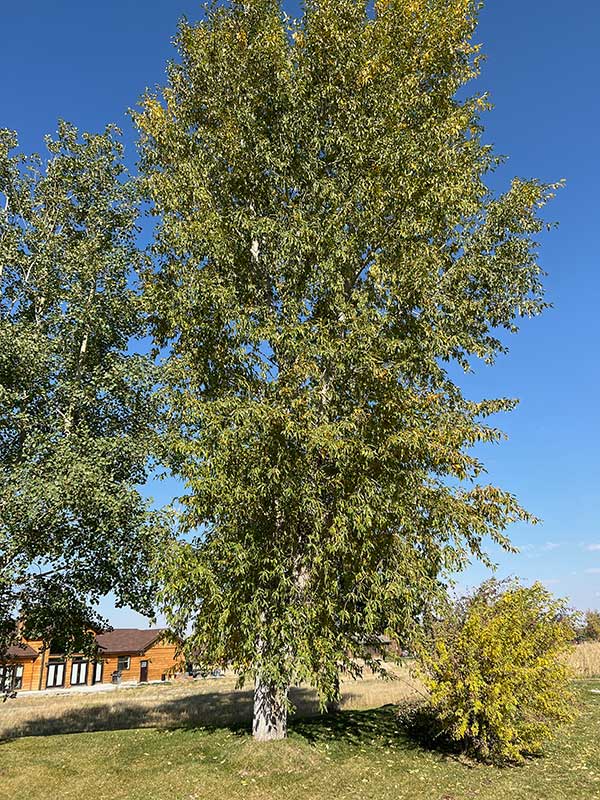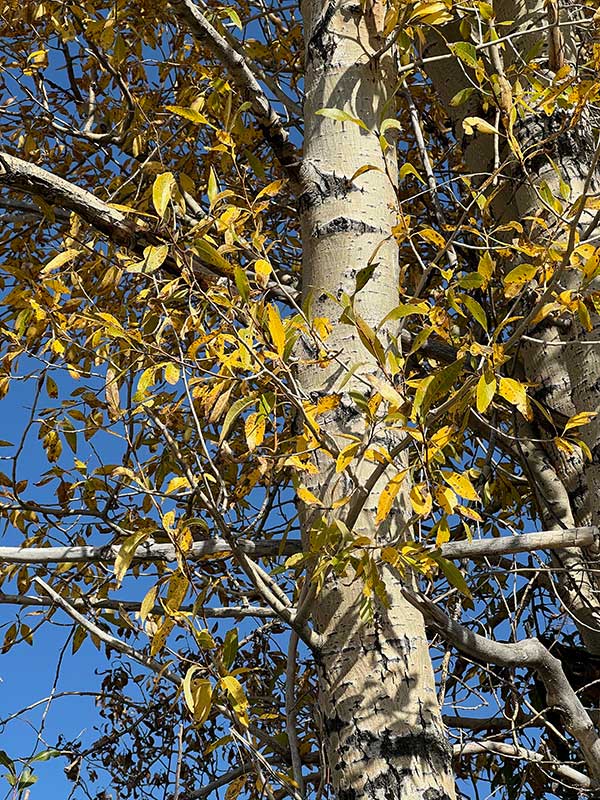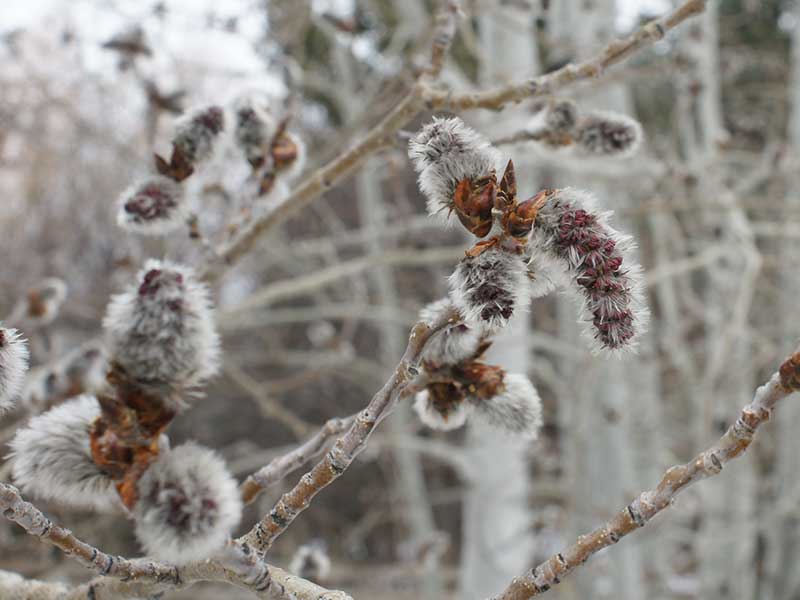Populus angustifolia / narrow-leaf poplar
- a riparian tree also planted for landscaping
- long, narrow leaves with serrated edges
- furrowed, grey bark on mature trees; smooth and yellow-ish on young trees
- flowers are small, grey catkins in very early spring
- fruits are fluffy white cotton in early-mid summer
Also known as: willow-leaf poplar, bitter cottonwood, willow cottonwood, mountain cottonwood, smooth-bark cottonwood
Narrow-leaf poplar is a very fast growing and deciduous tree. Without supplemental watering, it is a riparian species, and a major colonizer of sand bars and stream banks. Even in the open, it grows tall and narrow, not spreading. One consequence is that it can grow in tightly packed groves. And because of this growth form, branches can get enough light to live for many years. Thus, leaves can cover the trees from top to bottom.
For most of the year, identification depends on leaves and bark. The leaves are green (duh) but vary between yellow-green and dark green. They’re long and narrow with finely serrated edges. This makes them look like large-leafed willows. In the fall, they turn an unspectacular, dull yellow. The bark is rough and grey in mature trees but may be smooth and yellow-ish in young trees. By contrast, another local poplar, quaking aspen, has white bark, and heart-shaped leaves that turn a very nice yellow in autumn.
Like other poplars, indeed like all the salicaceae (willow family), the inflorescence is a catkin produced in early spring. Male and female catkins are usually on separate trees. Female catkins are more short and rounded; males are more elongated. Flowering occurs in late winter and very early spring.
The individual fruits are almost too small to see and each contains numerous, even more minute seeds. What you do see is their surrounding tufts of soft white hairs… the “cotton” of cottonwoods. The fruits ripen and blow away a bit later in the spring. They are quite plentiful and can accumulate in mounds that look like warm-weather snow along roadsides. The seeds are only viable for a couple weeks and have to land on wet soil in full sun.
Like other members of the family, narrow-leaf poplar reproduces vegetatively by sprouting from roots or cut stumps. (Think about that before planting these in your yard). Cut/broken twigs can also root and grow. And as long as we’re on the subject, poplar roots are really good at getting into sewers and drainage systems and clogging them up. In the wild, this means that they stabilize recently disturbed wetland soils and river banks.
At this point, if you suffer from allergies when the cotton blows around, you need to know that the poplars are not at fault. The cotton, unfortunately, appears at the same time that grasses really start releasing pollen to the wind. It’s their fault!
Interesting bits – Narrow-leaf poplar buds are sticky and gummy and were used as a sort of chewing gum by Native American peoples, including the Apache and Navajo. Young shoots were/are also used in making baskets.
The twigs and leaves are browsed by rabbits, deer, and moose, and buds and catkins are eaten by quail and grouse. None of this does serious damage to the trees. Growing as it does near water ways, it is popular with beavers for building lodges and cached as winter food.
And according to the informational sign at the rest area along US-26 between Swan Valley and Idaho Falls: “The South Fork of the Snake River supports the largest cottonwood gallery forest in the western United States, making this place truly unique. Narrow-leaf cottonwoods (Populus angustifolia) are a vital part of the environment providing nesting sites and perches for osprey & bald eagles.”
| Color | |
|---|---|
| Family | |
| Blossom size | |
| Inflorescence size | |
| Inflorescence type | |
| When? | |
| Where? |




